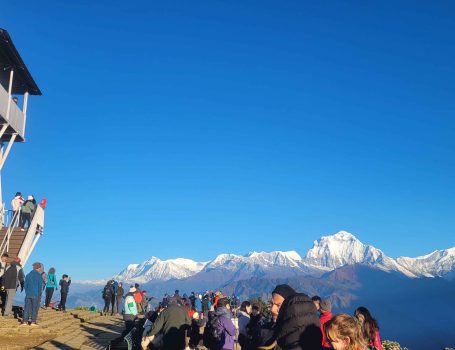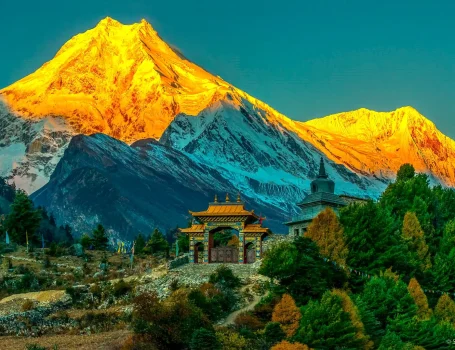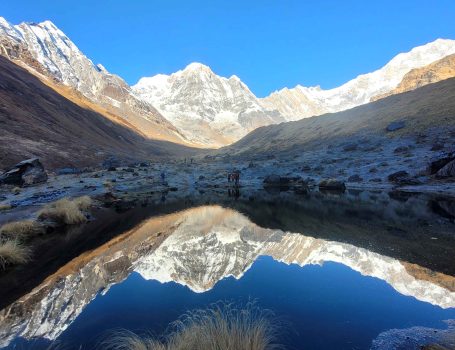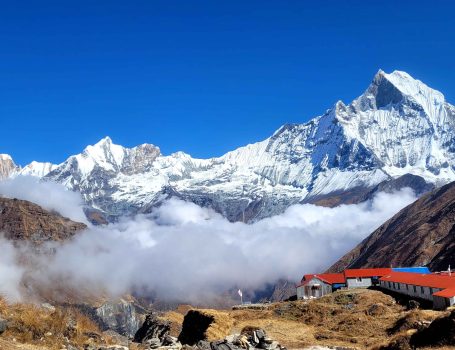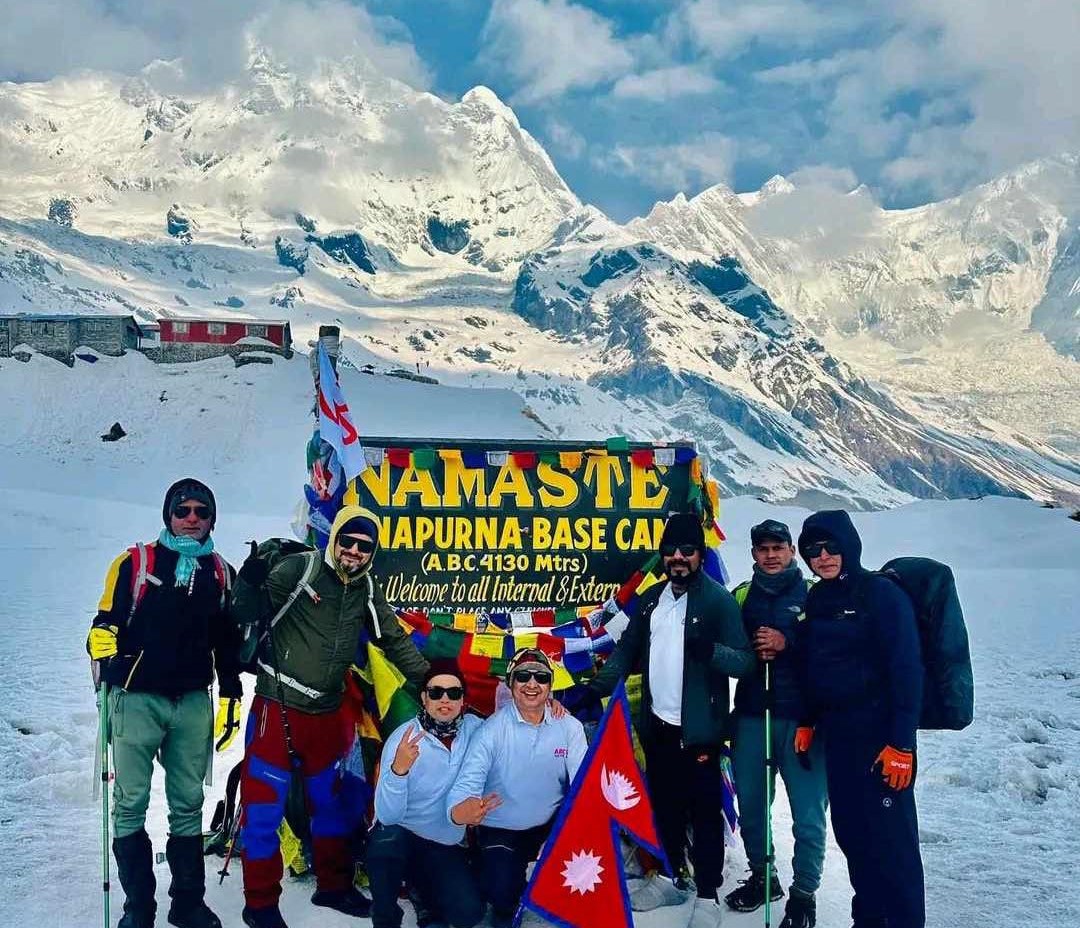Annapurna Circuit Trek
860
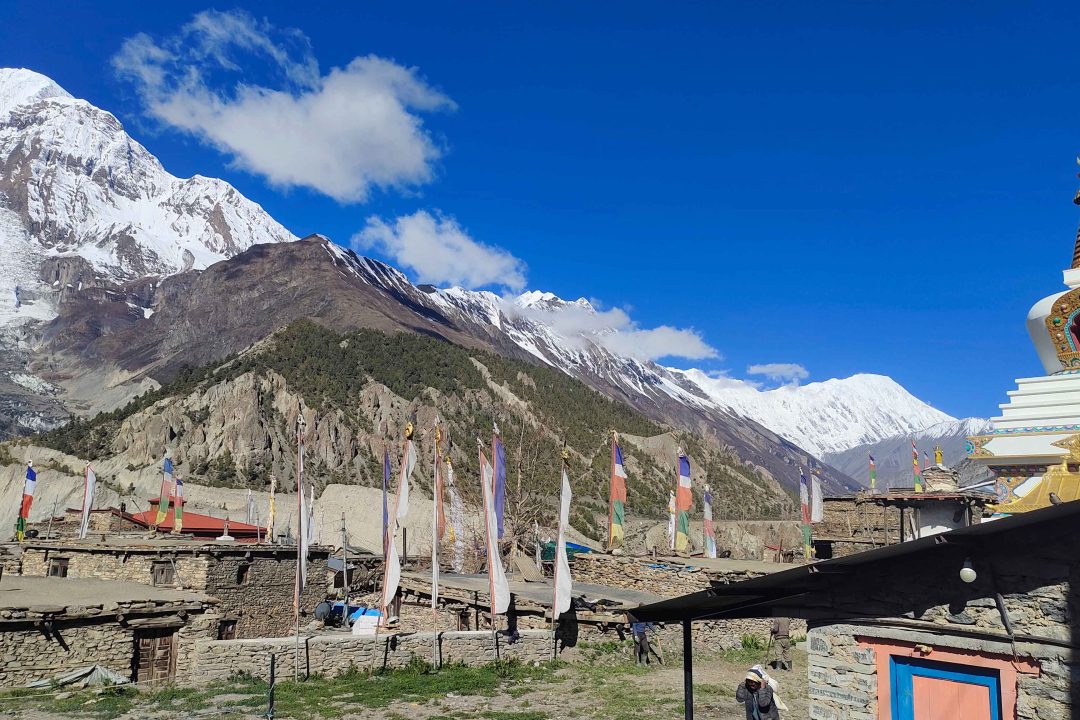
Trip Facts
- Duration 15 Days
- Trip Difficulty moderate
- Max. Altitude 5416 m
- Start and End Kathmandu - Kathmandu
- Best Time Autumn
- Accommodation Tea House/ Hotel
Trip Highlights
- Aspire to the extraordinary views of the peaks like Annapurna, Dhaulagiri, and Manaslu from near to far perspective.
- Cross the highest pass of challenging Thorong La at 5416m with the brilliant views of the nearby Himalayas.
- Transit through the diverse landscape with a blend of culture, with a sense of accomplishment.
- Encounter with the diverse ethnic groups of Gurung, Magar, and Manange
- Explore the charming villages in Pisang, Manang, and Jomsom
- Enchant your trek in a more sacred way in the traditional monasteries on your route and the Muktinath Temple.
- Enjoy the scenic flight from Jomson to Pokhara and Pokhara-Kathmandu to find a different perspective on sightseeing.
Overview
This enchanting and extravagantly adventurous trek to the Annapurna Circuit by All Nepal Excursions is an immersive experience of the blend of adventure and vibrant cultures. We begin the journey from Kathmandu, soaking ourselves in a vibrantly chaotic city. As we ascend towards the major goal of completing the Annapurna Circuit Trek, we cross through the diverse landscapes and terraced fields with the rugged terrain and thin air. The trail leads us to the traditionally covered villages in Pisang and Manang, providing us with the cultural interaction and teachings of the Nepali people. This trek overall provides us with the magical blend of extraordinary adventure and vibrant, brilliant culture, rewarded by the lush views of the Annapurna region for about two weeks.
Our journey peaks as we cross the exhilarating Thorong La Pass (5,416m). This remarkable destination amazes us with the panoramic vistas before descending to the sacred Muktinath Temple. We get the experience of transitioning geology when we descend towards the town of Jomsom from arid highlands to lush valleys. We will visit the sacred Muktinath temple along the way before we set foot on the next journey.
We have a flight to board if the weather is favorable for the transfer to Pokhara from Jomsom. The enchanting journey and aerial views of the striking beauty of the naturally beautiful Annapurna Sanctuary reward with a sense of achievement. Pokhara, with its serene scenery and lakes, awaits us for an enjoyable evening of celebrations. With All Nepal Excursions, the trek to the Annapurna Circuit is made easier and rewarding, all thanks to our meticulously crafted itineraries and skilled guides.
Why Annapurna Circuit Trek?
The Annapurna Circuit trek has a lot of pros to offer you as a trekker in all ways possible. Here are some of the major reasons why one should visit this wonderful destination:
Main Attraction
This trek to Annapurna Circuit illuminates us with the stunning Himalayan views and serene and captivating landscapes of the lower lands to the gigantic peak of Thorong La Pass. We cross diverse landscapes, cultures, traditions, and rituals on our way to the Annapurna roundabout and back.
History
This trail originated as a trade route between Nepal and Tibet in medieval times. However, this trek gained popularity as a tourist attraction in the mid-1980s to early 1990s. We follow the ancient paths, connecting through the ancient settlements like Pisang and Manang, stepping gradually towards the historic trade link road.
Culture
We will be immersed in the Gurung, Magar, and Manang cultures during the trek. We visit the monasteries and villages like Pisang. These villages promote the ancient culture while juvinating with the modern practices and communal traditions.
Geography
We cross a long route, hence passing through diverse geographic locations. Our trek crosses from the lowest altitude of 760m in Besisahar to the highest point in Thorong La’s rugged terrain at 5416m. We will also navigate rivers and arid zones. This is a dramatic geological diversity altogether.
Flora and Fauna
We will encounter the varied ecosystems in this trek. From subtropical forests and rhododendrons to meadows of alpine flowers. Wildlife consists of snow leopards, diverse birds, and Himalayan tahr. Our journey reveals vibrant flora and fauna throughout the diverse ecology of the Annapurna section.
Best Season for the Annapurna Circuit Trek
Spring Season (March-May)
Spring is one of those suitable seasons to set foot on the Annapurna Circuit. Two weeks of brilliant weather and balanced temperatures allow us the greatest of vistas all around the circuit and a striking offering from Thorong La Pass. The cultural seam provides a boundless experience to the circuit, with new experiences arising in the journey. Also, if the time is right, we get to interact with the locals in communal gatherings.
Autumn Season (September-November)
Autumn is sensibly the best season to trek to this majestic trail. The monsoon is over, and the trail becomes dry and lively to traverse. We will get the experience of mild temperatures and equal days and nights. The post-monsoon brings us a vastly clear and flawless trajectory of the sights we see. Villages like Pisang and Manang glow differently this season. The festivals like Dashain and Tihar are around the corner, so the immersion gets too real to experience. The trail’s natural beauty comprises with the beauty of culture and festivals this season.
Difficulties
- Crossing Thorang La Pass at 5416m can pose risks of altitude sickness, which requires careful acclimatization and hydration with nutritional food intake.
- Longer trekking days can last for 6 to 8 hours, like the day when we pass the Thorong La pass. This demands good fitness and endurance for us to traverse through the adventurous setting.
- The weather can’t be predicted easily in the elevated areas like Thorong La Pass and Thorong Phedi. This can challenge our preparedness and mental endurance.
- The trails are rough, rocky, and particularly muddy and slippery on various sections. That requires us to depend on our physical ability and balance.
Altitude Sickness
Altitude
The altitude difference of this trek is variable. We start from Kathmandu at 1320 meters and end up at 5416m, which is the highest elevation in Thorang La. To be more specific, we have to start walking from Besisahar(760m) to Thorang La Pass(5416m). The total elevation gain will be a total of 4656m. This trek required careful monitoring and acclimatization.
Acclimatization
On this trek, our acclimatization process of the trek starts with the gradual and steady ascent towards the Annapurna Base Camp. Hydration, slow pacing, proper rest, and nutritious food options ensure the safe adaptation to the rising altitude.
Precaution
To prevent altitude sickness, we have to ascend gradually, hydrate well, and avoid alcohol. Our guides will continually monitor your health status in case you exhibit any symptoms. We advise you to report to your guide as soon as possible if you see any of the symptoms, like nausea, headache, vomiting, and nose-bleeding.
Basic Treatment
For the initial treatments like headaches and nausea, we must rest, hydrate, and descend. We should take Diamox whenever we feel the need for the medication. The helicopter rescue is an option if we catch the severe symptoms like extreme vomiting and unconsciousness.
Rescue
Our guides will tell you if they feel the need for emergency evacuation. This is only possible if you are seriously injured or show severe symptoms of altitude sickness. Guides always coordinate with us to update us about the case and rescue in need. We suggest that you have travel insurance with helicopter coverage in the policy.
Essence of Travel Insurance for the Circuit Trek
Travel Insurance is very essential for high-altitude trips and treks like this. Travel Insurance helps us to safeguard the unforeseen events. The travel insurance should cover medical emergencies, including altitude sickness and emergency helicopter evacuations. Insurance also provides security for your hard-earned money, so it is important to check and consult with your travel agent properly. All Nepal Excursion will help you find the best policy. Proper insurance always saves you the big bucks, so always buy travel insurance before you leave for a trip to another country.
Additional activities
- We can immerse ourselves in Gurung and Manange culture and witness the cultural chants, with serene views of Annapurna and Dhaulagiri peaks.
- We explore the vibes of Namche Bazaar and buy trekking gear, souvenirs, and local handicrafts like prayer flags.
- We can browse Thamel’s bustling streets for Nepali pashminas, trekking supplies, or souvenirs before or after the trek.
- We must visit UNESCO sites like Boudhanath Stupa and Pashupatinath Temple whenever we are free.
- We will engage with locals on our rest days by being engaged in their daily chores and practices.
